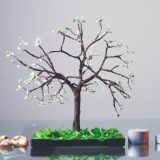Lent means many things to many people. For some, it is a time for reflection and contemplation. For others, it is a time for renewal and refocus. For us at St Bart’s, it’s about looking beyond the traditional focuses of prayer, fasting and almsgiving and towards opening our doors wider to those in need.
The time of Lent for Christians is the six week preparation period for the Easter celebration of the death and resurrection, or the overcoming of death, of Jesus Christ. The Lenten season commences on Ash Wednesday, 26 February, and ends with the Easter celebrations that commences on Maundy Thursday, 9 April, through to Easter Sunday on 12 April.
Traditionally, the Lenten period is a refocusing time. Recommitting in effort in prayer, generosity, and focus on others. So we will often hear Christians talk about what they have given up for Lent. Usually the answer is around a peripheral item in the individual’s life, such as chocolate or coffee. Sometimes it’s a more serious focus like no television for six weeks!
This has been rightly challenged as being a very self-focused approach. Mary Hood Hart has written well that the focus would be better if it was moved from self-improvement to self-giving. Further, she has suggested a practical way in which we can do this through a Lenten Social Justice Tree.
For us at St Bart’s, the example of a Lenten Social Justice Tree would see each of our sites or service areas planting a small bare tree in a pot and decorating it with leaf-shaped tags with appropriate resident needs written on them. Mary Hood Hart suggests that the tags be centred on the seven Social Justice Neighbour Needs:
1. Dignity of the Human Person (immigration, refugees, people in trauma of homelessness);
2. Live as Family and Community (reach out to care for those in need who are around us);
3. Rights and Responsibilities (advocate for those whose rights are being denied, such as to raise the Newstart Allowance);
4. Poor and Needy (care for those who are in most need);
5. Dignity and Rights of Workers (just pay and fair conditions);
6. Solidarity (awareness that we are all humans, connected and needing one another);
7. Stewardship (using our resources wisely to protect earth and all creation).
A staff member takes a leaf from the Lenten Social Justice Tree to perform the designated act of service, justice or kindness as drawn from the seven Social Justice Neighbour Needs listed above.
Our world today presents plenty of opportunities to assist others. Writing to a member of parliament on the need to raise the Newstart Allowance is one example. Supporting the Centre for Asylum Seekers, Refugees and Detainees is another. You could donate to St Bart’s, a Wildlife sanctuary caring for animals affected by the Australian bushfire crisis, or any number of deserving organisations. Something as simple as having a lonely neighbour over for a meal can also have a huge impact.
Once the Social Justice Neighbour Needs action on the leaf has been undertaken, a paper flower is placed on the Tree so that by Easter the Lenten Social Justice Tree should be full of blooms. This will give us a powerful image of the difference that we are making, the hope generated, and our desire for a better future for people and all creatures within the created order.



